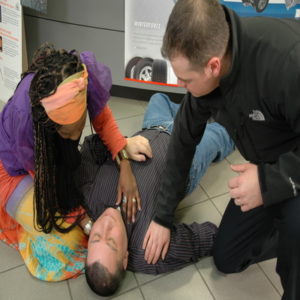How does CPR save lives – how does it work ?what to do when someone dies, learn more, book a course today
Cardiopulmonary resuscitation is a lifesaving technique useful in many emergencies, including heart attack or near drowning, in which someone’s breathing or heartbeat has stopped.
Cardiopulmonary resuscitation, or CPR, is an emergency procedure in which a person presses up and down on the casualty’s chest (chest compressions) and gives them a series of rescue breaths to help save their life when they are in cardiac arrest.
CPR is a procedure that should only be used when someone is unconscious and not breathing – or not breathing – normally. If someone is unconscious but they are breathing normally, you still need to call 999 and then put them in the recovery position

How does CPR help?
By performing chest compressions and rescue breaths, you are taking over the role of their heart and lungs, pumping blod and oxygen around their body.
Every second counts – any delay can quickly reduce a person’s chance of survival. And if they do survive, delay can also cause permanent damage to the person’s brain. If you have access to a defribillator access it as quickly as possible, it will augment the life saving proceedure
For more information on life saving resucitation go to https://www.resus.org.uk/
How do defribillators work?
After the processor analyzes the heart rhythm and determines a shock is required, an electric current is then delivered to the heart through the victim’s chest wall through adhesive electrode pads. The shock delivered by a cardiac defibrillator interrupts the chaotic rhythm and allows it to return to normal